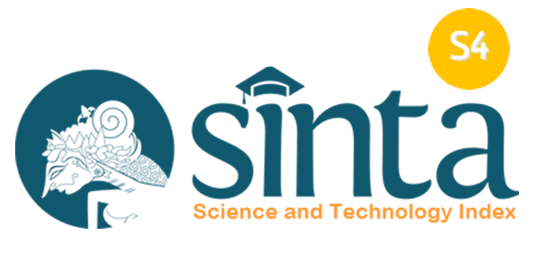Circus Arts and Activities Affect for Children With Autism to Improve Art Therapy
Abstract
This project is concerned with how circus training can benefit children diagnosed on the autistic spectrum and, in turn, their families. Many “special needs” children spend a great deal of time in physiotherapy, speech therapy, osteopathic therapy, occupational therapy, and behavioural therapy. The thesis explores how circus can open a new world to such children, enabling them to take risks, physically and emotionally; to stretch the capacities of their bodies in an environment that enriches their social development. Not only do they gain in strength, coordination, and physical awareness, but they can also gain confidence, opportunities for creative expression and a sense of “fitting in”. The results offer insights into how their circus rehearsal influences their wellbeing. These findings highlight that artistic expression, physical abilities, and personal growth collectively contribute to the comprehensive development of young individuals during this crucial life phase.
Keywords
Full Text:
PDFReferences
Agans, J. P., Davis, J. L., Vazou, S., Jarus, T. (2019). Self-determination through circus arts: exploring youth development in a novel activity context. Journal of Youth Development, 14(3),
Ahmad, S., Hussain, A., Batool, A., Sittar, K., & Malik, M. (2016). Play and cognitive development: Formal operational perspective of Piaget’s theory. Journal of Education and Practice, 7(28), 72–79.
Blažević, I. (2016). Family, peer, and school influence on children’s social development. World Journal of Education, 6(2).
Bonk, R. M. (2019). The role of circus arts in Art Therapy. Doctoral Dissertation.
Bruce, Mike (2012) Tim’s a real super hero, Courier Mail , “U” magazine, April 8, p. 6
Cadwell, S. J. (2018). Falling together: An examination of trust building in youth and social circus training. Theatre, Dance and Performance Training, 9(1), 19–35.
D’Amico, M., & Lalonde, C. (2017). The effectiveness of art therapy for teaching social skills to children with autism spectrum disorder. Art Therapy, 34(4), 176-182.
Faltus, J., & Richard, V. (2022). Considerations for the Medical Management of the Circus Performance Artist and Acrobat. International journal of sports physical therapy, 17(2), 307–316.
Bencheikh, I, Azoulay, K., Mabrouki, J., Hajjaji, S. E., Moufti, A., and Labjar, N. (2021). The use and the performance of chemically treated artichoke leaves for textile industrial effluents treatment. Chemical Data Collections, 31(2021), 100597.
Funk, A., M. (2017). Circus Education in Québec: Balancing Academic And Kinaesthetic Learning Objectives Through an Artistic Lens. Master thesis dissertation. Concordia University.
Funk, A. (2021). Circus education in Québec: Balancing academic and kinaesthetic learning objectives. In, The Cambridge companion to the circus.
Fusar-Poli, P. (2019). Integrated mental health services for the developmental period (0 to 25 years): A critical review of the evidence. Frontiers in Psychiatry, 10, 355.
Harper, N. J. (2017). Outdoor risky play and healthy child development in the shadow of the “risk society”: A forest and nature school perspective. Child & Youth Services, 38(4), 318-334.
Heller, C., & Taglialatela, L,. A. (2018). Circus Arts Therapy® fitness and play therapy program shows positive clinical results. International Journal of Play Therapy, 27(2), 69-77.
Kiez, T. (2015) The Impact of Circus Arts Instruction on the Physical Literacy of Children in Grades 4 and 5. The University Manitoba.
Lavers, K., Burtt, J., & Bochud, E. (2022). Cirqiniq: The decolonising of social circus in Nunavik. Theatre, Dance and Performance Training, 13(2), 180-195.
Liu., J., You, Q., Wei, M., Wang, Q., Luo, Z., Lin, S., Huang, L., Li, S., Li, X., & Gao, T. (2014). Social isolation during adolescence strengthens retention of fear memories and facilitates induction of late-phase long-term potentiation. Molecular Neurobiology, 52,1421-1429.
Meilman, A. (2018). Circus arts as expressive arts therapy. Expressive Therapies Capstone Theses.
Murphy, C. (2022). Vygotsky and science education. Springer International Publishing.
Pedaste, M., Mäeots, M., Siiman, L. A., Jong, T. D., Riesen, S. A., Kamp, E. T., . . . Tsourlidaki, E. (2015). Phases of inquiry-based learning: Definitions and the inquiry cycle. Educational Research Review, 14, 47-61.
Rusu, M. (2017). Empathy and communication through art. Review of Artistic Education, 14(1), 139-146.
Seymour, K. (2012). How Circus Training Can Enhance the wellbeing of Autistic Children and Their Families. Griffith University.
Spiegel, J. B. (2021). Social circus: The rise of an inclusive movement for collective creativity. In G. Arrighi & J. Davis (Eds.), The Cambridge companion to the circus 1, 216–228. Cambridge University Press.
Topçiu, M., & Myftiu, J. (2015). Vygotsky theory on social interaction and its influence on the development of pre-school children. European Journal of Social Sciences Education and Research, 4(1), 172.
Weikart Center for Youth Program Quality. (January, 2017). Social and Emotional Learning in American Youth Social Circus Programs (Rep.). R
DOI: https://doi.org/10.17509/jassi.v23i1.67887
Refbacks
- There are currently no refbacks.
Copyright (c) 2024 Universitas Pendidikan Indonesia

This work is licensed under a Creative Commons Attribution-ShareAlike 4.0 International License.




